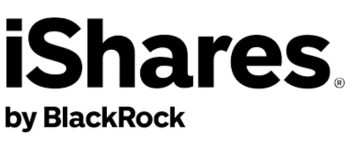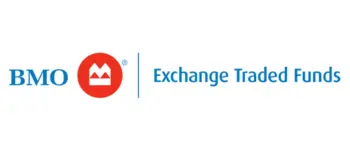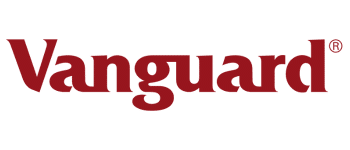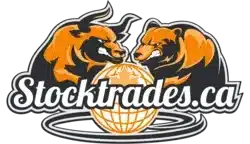These Canadian ETFs Offer Easy Access to Diversification and Several Global Powerhouses
Key takeaways
Low-Cost U.S. & Global Access – Enable Canadian investors to gain cost-effective access to international markets.
Broad Market Coverage – These ETFs provide exposure to Canadian, U.S., and international stocks, ensuring diversification.
Dividend & Fixed Income Options – With the expansion of different types of ETFs, there is something for everyone these days.
One ETF I like way better than the ones on this list.Millions of Canadian investors have ditched their mutual funds for exchange-traded funds (ETFs). In this article, I’m going to go over some of the best ETFs to buy in Canada today.
But first, lets dive into the intricacies of an ETF.
What’s an ETF?
Before we tackle the best ETFs, let’s back up for a minute. What exactly is an ETF, and why are they solid investments?
An ETF is a pooled basket of securities to track an underlying index. Most ETFs only make changes when the index they follow makes changes, making them among the most passive investments. This lack of activity helps keep fees down. ETFs are bought and sold on stock exchanges, just like individual stocks.
ETFs are like mutual funds in many ways, but there are a few critical distinctions, primarily in the legal structure. While mutual funds pool capital and buy securities, ETFs use something called an authorized participant to effectively manage the liquidity and the issuance/redemption of units on the public markets.
This is primarily why mutual funds tend to be purchased directly from a financial advisor, while ETFs are purchased directly on the stock exchange — although there are more and more financial advisors who are abandoning mutual funds in exchange for ETFs. As mentioned, they are similar investments but have a different legal structure.
Why switch to ETFs?
The most important reason is fees, of course. A mutual fund can easily charge a 2% management fee, with expenses even higher for some specialty funds. Most ETFs, meanwhile, charge fees about one-tenth that much, or 0.2%. Some specialty ETFs charge more, but most of the big ones charge less, with many charging fees under 0.1% of assets under management.
Lower fees automatically translate into higher returns, at least when you compare an ETF to a similar mutual fund. Remember, your net return on an investment is essentially the gross return minus the fees.
There are only two variables. If one of those variables goes down, that’s a good thing. The math doesn’t lie; more mutual funds would beat the market if they charged comparable fees to ETFs.
The rise of ETFs has also made investing simpler. The average investor can put their capital into an index ETF with just a few clicks of a mouse. Or, depending on the service they use, an investor can even set automatic withdrawals from their bank account to be immediately invested in ETFs, ensuring they’re putting precious capital to work every paycheque or every month.
The finance industry knows ETFs are the future, so it has responded accordingly. Thousands of different ETFs have popped up, ranging from simple products that track broad indexes to ETFs that try to mimic complex investing strategies, or ETFs that assist in avoiding taxable events such as tax-efficient ETFs. It’s enough to overwhelm even an experienced investor.
Let’s take a closer look at some of the top exchange-traded funds in Canada today. I’m going to include a wide variety of asset classes and geographical exposures, so there is something for everyone on this list.
What are some of the best ETFs to buy in Canada today?
- iShares TSX 60 ETF (TSX:XIU)
- Global X Capped TSX Composite ETF (TSX:HXCN)
- BMO Low Volatility Canadian Equity Fund Srs ETF (TSE: ZLB)
- Vanguard S&P 500 Index ETF (TSX:VFV)
- BMO NASDAQ 100 Equity Hedged to CAD Index Series Units ETF (TSE: ZQQ)
- Vanguard FTSE Developed All Cap Ex North America ETF (TSX:VIU)
- BMO Aggregate Bond Index ETF (TSX:ZAG)
Canada’s largest blue-chip ETF
iShares TSX 60 ETF (TSX:XIU)

XIU tracks the S&P/TSX 60, which consists of Canada’s largest and most liquid stocks. It offers a simple, cost-effective way to gain exposure to the Canadian equity market.
Broad exposure to Canadian equities
Global X Capped TSX Composite ETF (TSX:HXCN)

HXCN tracks the S&P/TSX Composite Index, providing broader market exposure than XIU by including mid- and small-cap stocks.
Defensive Canadian equity ETF with lower volatility
BMO Low Volatility Canadian Equity Fund Srs ETF (TSE: ZLB)

ZLB invests in Canadian stocks with lower historical volatility, aiming to reduce risk while maintaining strong returns. It selects companies based on stability and downside protection, making it an attractive choice for conservative investors.
Canadian-listed U.S. stock exposure
Vanguard S&P 500 Index ETF (TSX:VFV)

VFV provides access to the S&P 500 without currency hedging, making it a strong option for long-term U.S. equity exposure.
Canadian-hedged exposure to U.S. tech giants
BMO NASDAQ 100 Equity Hedged to CAD Index Series Units ETF (TSE: ZQQ)

ZQQ tracks the NASDAQ-100 Index, providing Canadian investors with exposure to top U.S. technology and growth companies while hedging currency risk against the Canadian dollar. This ETF allows investors to benefit from leading innovation-driven firms without worrying about USD/CAD fluctuations.
Global diversification beyond North America
Vanguard FTSE Developed All Cap Ex North America ETF (TSX:VIU)

VIU provides exposure to developed markets outside North America, including Europe, Asia, and Australia. It includes companies across all market capitalizations, offering a broad and diversified approach to international equities.
Core Canadian bond exposure
BMO Aggregate Bond Index ETF (TSX:ZAG)

ZAG tracks a broad mix of Canadian government and corporate bonds, offering exposure to short-, medium-, and long-term fixed income securities. This makes it a strong choice for portfolio diversification and stability.
What about a robo-advisor?
Investors can easily purchase a basket of ETFs through a special financial advisor. These asset managers are called Robo-advisors, and they use software to help uncertain investors build a portfolio full of low-cost ETFs while maintaining a suitable asset allocation.
Essentially, it’s a financial advisor without spending time with a human. Wealthsimple has surged to the top of the robo-advisor world, winning over customers with low overall fees, good customer service, and many other financial products under one roof.
The industry has gone from a few dozen ETFs to thousands, with multiple ETFs tracking almost every conceivable index. Investors can use ETFs to get direct exposure to just about any country’s stock market or use them to invest in specific types of stocks or various other strategies.
Some popular choices include dividend stocks, covered call strategies, or exposure to other countries in a currency-hedged fashion. Some ETFs even allow investors to make leveraged bets on various asset classes, like crude oil or NASDAQ stocks, for those who want to get interested.
ETF providers
There are more than a dozen companies in Canada that provide ETFs. Still, in reality, the sector is dominated by a handful of names.
The largest is BlackRock, which has quietly grown to be the top ETF provider in North America and one of the largest asset management companies worldwide. It had US$8.59 trillion in assets under management at the end of 2022, spread out over dozens of different countries. Its ETFs are marketed under the iShares brand name. Many of Canada’s largest ETFs are managed by BlackRock.
Next is Vanguard, the non-profit passive investing giant started by John Bogle in 1974. Vanguard’s funds are entirely owned by its customers, with this non-profit approach critical in keeping fees as low as possible.
It had approximately $8 trillion in worldwide assets under management at the end of 2022. Vanguard has only operated in Canada for a little longer than a decade but has grown to the point where it threatens BlackRock’s leadership status.
Another big ETF provider in Canada is the Bank of Montreal (BMO), which expanded away from mutual funds and into ETFs in the early 2010s. BMO is the leader in more specialty funds, focusing on more niche areas of the market rather than going up against BlackRock and Vanguard directly.
If, for example, you’re looking for an ETF that tracks junior gold companies, BMO likely has it — and at a pretty reasonable fee, too. It also does a pretty good job of providing mainstream ETFs at costs comparable to its two larger competitors.
There are a number of other ETF providers in Canada. Still, they mostly focus on niche areas that the three main providers don’t cover. Some of these ETFs are useful; we’ll even profile one or two. But, for the most part, investors should stick with big ETFs provided by the leaders in the sector. Leave the specialty ones for those who want to use them as a substitute for active investing.
